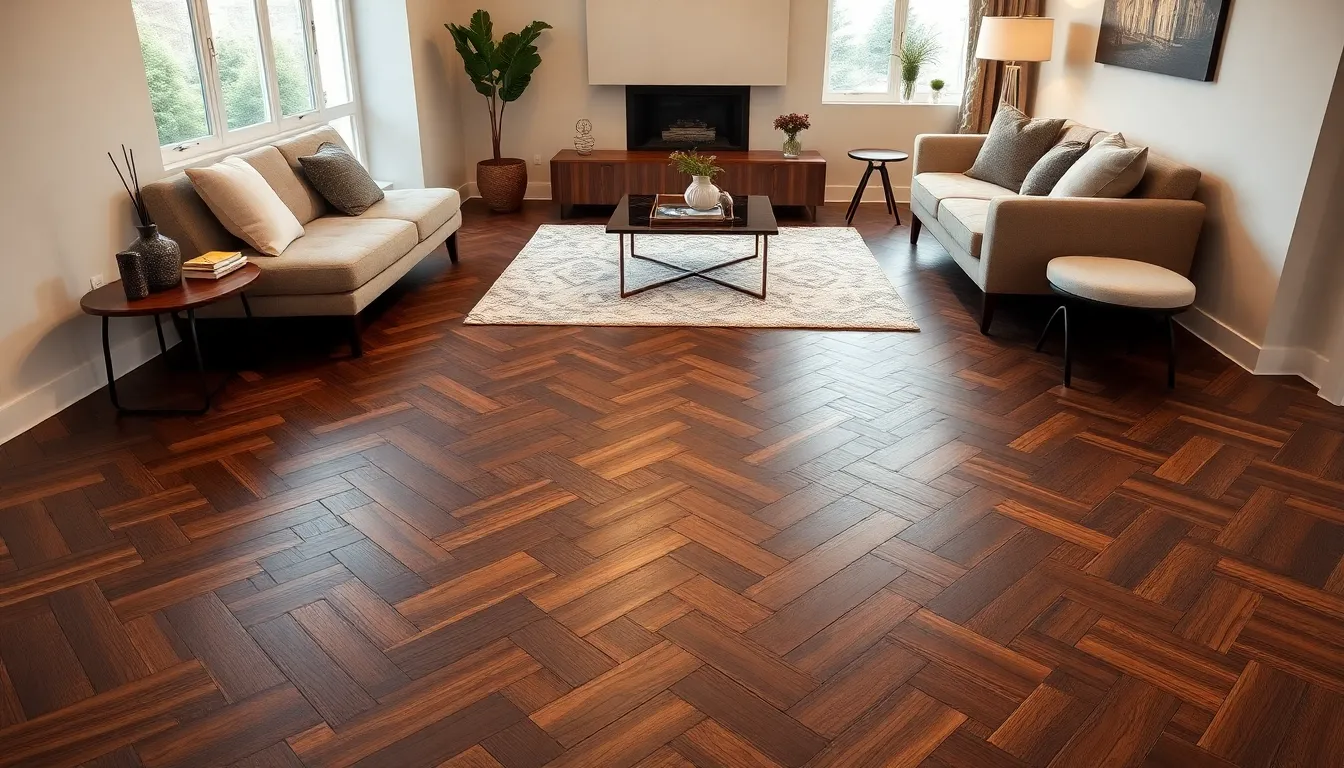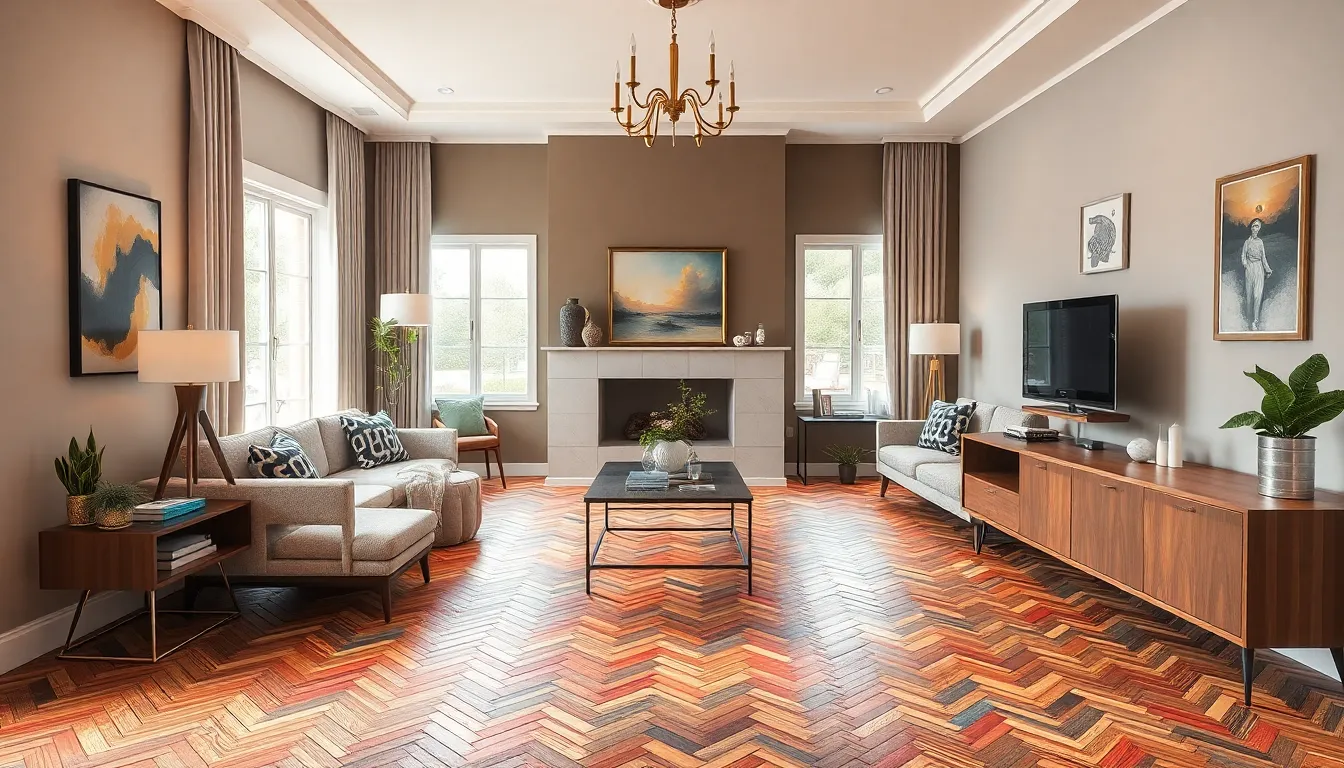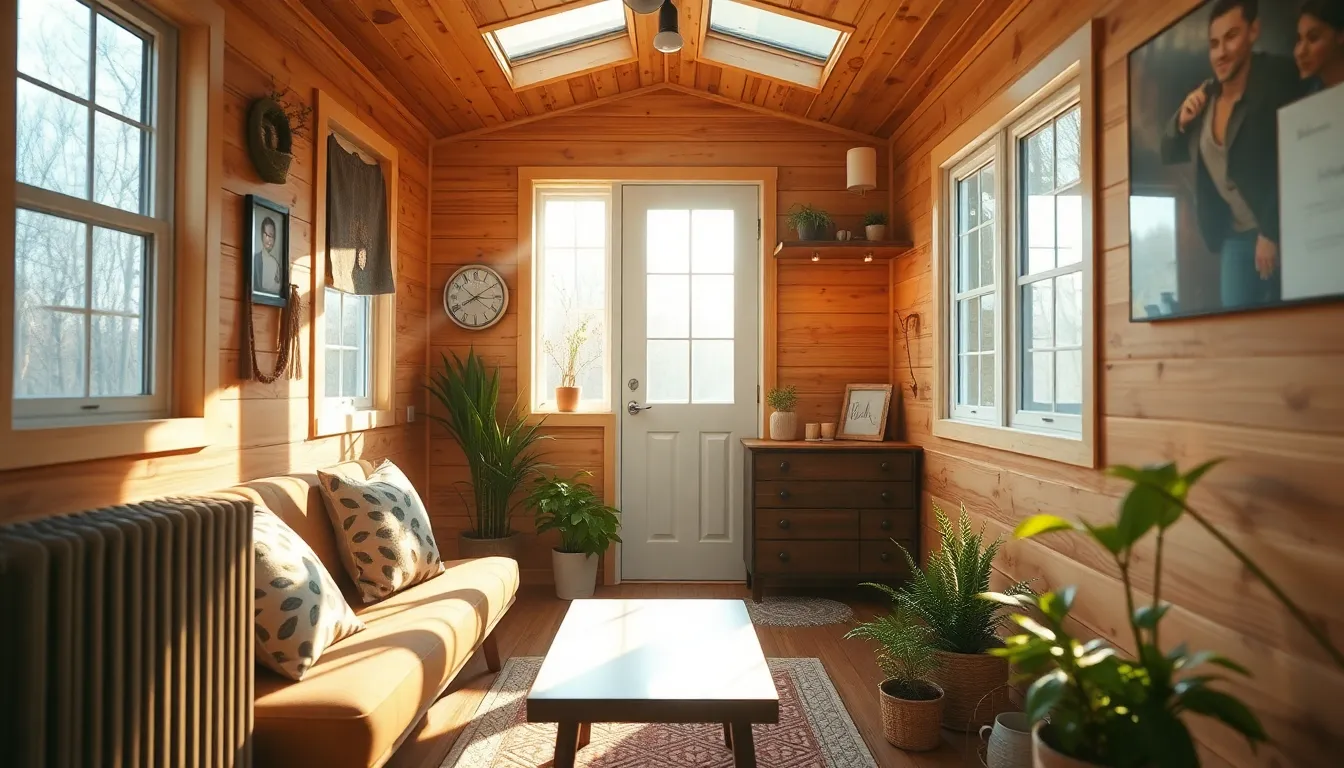When it comes to flooring, the herringbone pattern is like the stylish cousin who shows up to every family gathering and steals the spotlight. With its distinctive zigzag design, it brings a touch of elegance and sophistication that transforms any space from drab to fab. Whether it’s in a cozy kitchen or a grand living room, this pattern knows how to make a statement without shouting.
But let’s be honest—herringbone isn’t just about looks. It’s a versatile choice that can adapt to any decor style, from rustic charm to modern chic. Plus, it’s a conversation starter. Imagine your friends’ faces when they step into your home and see those eye-catching angles. So if you’re ready to elevate your flooring game, it’s time to dive into the world of herringbone and discover why this pattern is the bee’s knees of interior design.
Table of Contents
ToggleOverview of Herringbone Floor Pattern
Herringbone floor patterns feature a distinctive zigzag design, creating a visually striking effect that transforms any room. Arranging planks at right angles produces the signature V-shape seen in this style. The pattern adds depth and texture, enhancing the overall interior design.
Versatility characterizes herringbone flooring, making it suitable for numerous applications, from modern to traditional settings. Many designers recommend using herringbone in entryways, hallways, and open-concept spaces. This adaptability allows homeowners to incorporate the pattern seamlessly into various decor styles.
Durability plays a significant role in the appeal of herringbone flooring. Various materials, including wood, laminate, and tile, can be used to achieve the look. Each material offers distinct benefits, such as longevity, ease of maintenance, and aesthetic appeal.
This flooring option not only elevates the visual interest of a space but also sparks conversation among guests. Visitors often admire the intricate design, making it a focal point in home decor. With herringbone patterns, homeowners create vibrant spaces that reflect their personality and taste.
Design trends increasingly favor herringbone, with many opting for bold color choices and finishes. Alternatives like contrasting grout lines in tile installations further enhance the visual impact. As a result, homeowners can personalize this classic design to suit their unique style.
Benefits of Herringbone Flooring
Herringbone flooring offers numerous advantages that appeal to homeowners and designers alike. Its design enhances both aesthetics and functionality in multiple spaces.
Aesthetic Appeal
Herringbone flooring stands out with its unique zigzag pattern that captures attention. Spaces like living rooms and kitchens gain sophistication from this classic design. Homeowners often find that this flooring complements various decor styles, from traditional to modern. Colors and materials add diversity, allowing for personalization. Each installation transforms rooms, creating a striking focal point that sparks conversation. Guests frequently admire the intricate patterns and visual interest that herringbone brings. Trends today showcase bold finishes and colors, making this flooring an even more appealing choice.
Durability and Longevity
Durability characterizes herringbone flooring, making it a practical option for high-traffic areas. Materials such as hardwood, laminate, and tile provide lasting performance. Each material offers specific advantages, ensuring homeowners can select based on their needs. Hardwood resists scratches and dents, while tile is moisture-resistant, perfect for kitchens and bathrooms. Longevity ensures years of beautiful flooring, minimizing replacement costs. Maintenance requirements are typically low, enhancing its appeal to busy households. Many homeowners appreciate the resilience and easy upkeep of herringbone flooring throughout their daily lives.
Installation Process for Herringbone Floors
Installing herringbone floors requires precise preparation and attention to detail for optimal results. Following a structured approach ensures a seamless installation.
Preparation and Planning
Start by determining the layout for the herringbone pattern. Measure the room’s dimensions and choose a starting point, typically at the center or an angled corner. Calculate the number of planks required based on the total area. Ensure the subfloor is clean, dry, and level, as any imperfections can affect the final look. Consider the expansion gaps, which allow for natural movement of materials. Account for any transitions or molding that might need installation as well. Prioritizing a well-thought-out design guarantees a stunning appearance.
Tools and Materials Needed
Gather essential tools and materials before beginning the installation. Common tools include a miter saw for precise cuts, a tape measure for accuracy, and a level to ensure the floor sits flat. Additionally, a hammer or a flooring nailer facilitates plank installation, while spacers maintain consistent separation for expansion. Choose adhesive suitable for the flooring material, such as glue for wood or a specific mortar for tile. Herringbone floors typically require high-quality planks made from durable materials like hardwood, laminate, or tile. Investing in quality supplies leads to a long-lasting and visually appealing result.
Maintenance Tips for Herringbone Floors
Herringbone floors require specific maintenance to preserve their beauty and functionality over time.
Cleaning and Care
Routine cleaning helps maintain herringbone floors. Use a soft-bristle broom or microfiber mop to remove dirt and debris. Damp mopping with a pH-neutral cleaner works well for wood floors, ensuring you wring out excess water. Avoid harsh chemicals that could damage the finish. For tile herringbone, a vacuum with a brush attachment can effectively clean grout lines and surfaces. Regularly sealing surfaces enhances durability and protects against stains. Implement these simple tasks weekly to keep floors looking fresh.
Repairing Common Issues
Addressing common issues quickly prevents further damage to herringbone floors. For minor scratches, a wood filler that matches the flooring color provides an effective solution. Apply with a putty knife and sand down for a smooth finish. Loose tiles can be re-adhered using appropriate adhesive; ensure the surface is dry before application. If gaps form due to temperature changes, consider using a color-matched caulk to fill them in neatly. These quick repairs help maintain the appealing aesthetic of herringbone flooring.
Conclusion
Choosing herringbone flooring can significantly enhance the aesthetic appeal of any space. Its unique zigzag pattern not only adds visual interest but also complements a wide range of decor styles. The durability of various materials like wood and tile ensures that this flooring option stands up to the demands of everyday life while remaining easy to maintain.
With careful installation and routine upkeep, herringbone floors can become a stunning focal point in a home. Whether it’s a cozy living room or a bustling kitchen, this flooring choice brings elegance and sophistication to any environment. Embracing herringbone is a step toward creating a stylish and inviting atmosphere that guests will admire.









